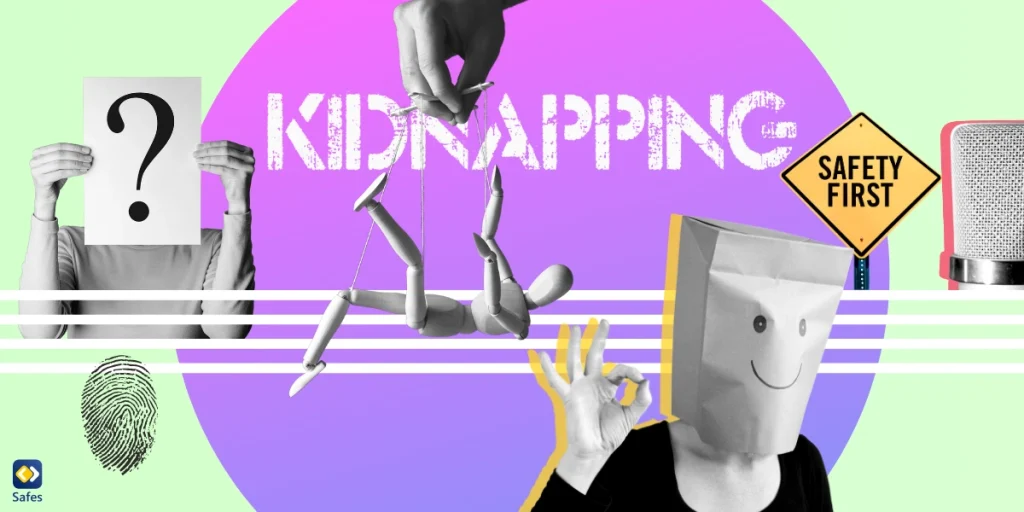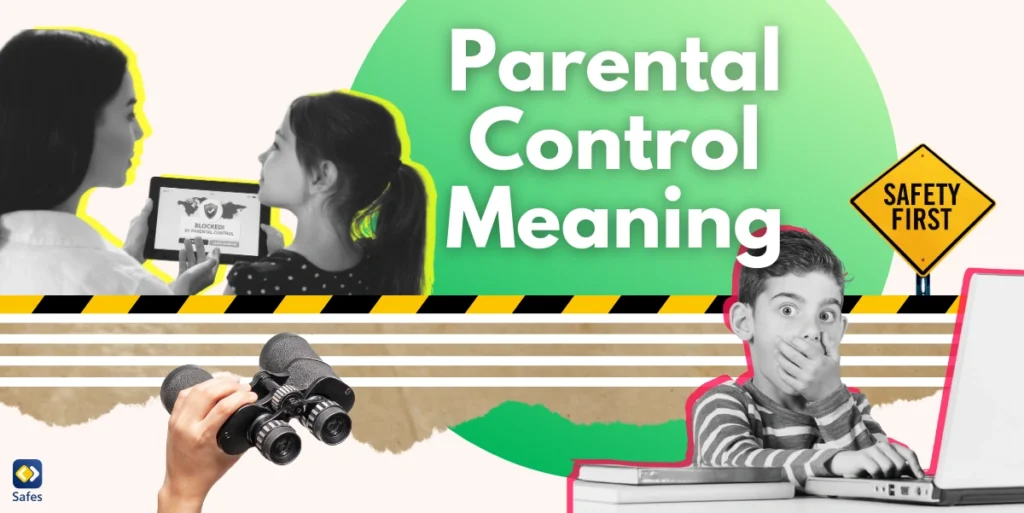Technology is advancing every day to make the lives of the people who use it easier. But with its convenience comes new, modern forms of trouble. Take artificial intelligence, for example. This groundbreaking technology provides customized texts, voices, and images in the snap of a finger, facilitating tedious tasks. Conversely, it also allows cybercriminals to prey on people’s deepest darkest fears to take advantage of them. AI kidnapping scams are a common form of these frauds, which have recently been on the rise. In this blog post, we’ll try to instruct parents on what it is, how criminals commit it, and how they can protect themselves from falling into its trap.
Download and Start Your Free Trial of the Safes Parental Control App
Understanding AI Kidnapping Scams
The very first step to shield oneself from any danger is to get to know it. Below, we’ll delve into the world of AI kidnapping scams.
What Are AI Kidnapping Scams?
As the name suggests, AI kidnapping scam is an AI scam about kidnapping a loved one. It’s a more advanced form of traditional scams: Before, scammers needed to rely on vague claims about an imaginary scenario. Now, with the help of AI, scammers can create convincing scenarios that blur the lines between illusion and reality. Scammers then communicate with the allegedly kidnapped person’s family and ask for money. This type of scam has made it much harder for the victim to understand whether the narrative is true or made up. On the other hand, the slight possibility of it being right makes them do anything to protect their loved one from harm.

The Psychology Behind Emotional Manipulation
Behind every AI kidnap scam there is a simple mechanism: emotional manipulation. Scammers trigger feelings of fear, love, and the need to protect a loved one to take advantage of the situation. Studies show that people tend to have lower performance in stressful situations. This increases the chances of reckless behavior and neglecting safety rules. Another emotional manipulation tactic scammers use is to create a sense of urgency. They make the victim think that if they don’t act immediately, their loved one’s life will be in danger. This will provoke a “fight-or-flight” response in them, while the love for the person prompts them to choose to fight.
Methods and Techniques Employed
How do AI scam kidnaps work? One way is to use fake AI-generated voices – also referred to as deepfake audio – of a person, pretending to have kidnapped them in order to collect ransom money from their family. Another way is to craft manipulated videos of someone, showing them in a distressing situation while asking for help. The materials needed for these operations are not that hard to find: they can be easily collected from the biometric information that exists in every person’s social media account, such as Instagram, TikTok, or YouTube.
Recognizing and Preventing AI Kidnapping Scams
Now that we know the harrowing details of AI-generated kidnapping scams, it’s time to discuss ways to prevent falling victim to them. Here are some tips for recognizing the signs and preventing these scams that every parent should know:
Awareness and Vigilance
First of all, educate yourself! You must be in the know of the latest online dangers and the methods predators use to exploit your children. Plus, be aware of your child’s whereabouts at all times. Make sure they’re available and that you can easily contact them. Another important thing is to receive unexpected communications from unknown people with a pinch of skepticism; ill-intentioned people are all over the internet!
Verifying Identity
Before you take any action, take a moment to verify who the caller is. Of course, this is not always possible as scammers tend to hide their identities. However, asking them questions may help you recognize gaps in their narrative and debunk their claims. After the call is over, immediately call the alleged victim on the phone to see if you can talk to them.
Personal Information Protection
The things that you and your child share online leave a digital footprint. Scammers can use this information to personalize their attacks. Avoid sharing personal information on social media, keep your and your child’s accounts private, and accept only friend requests from the people that you know and trust.
You can implement all these tips into your own online behavior, but making sure that your child does the same can be a hassle. If you want to monitor your child’s online activities and ensure they’re not engaging in risky behavior, Safes parental control app is a good option for you. This app gives you full supervision of everything they search for online, everyone they talk to, and the things that they post on social media. Plus, it works on all devices, whether you have an Android, iOS, or Windows. Feel free to try Safes with our 14-day free trial and experience comprehensive supervision of your child’s online activities across all their devices.

Emotional Regulation and Decision-Making
One of the most important skills a person can possess is emotional regulation. Not only does it lower the risk of mental health issues, but it also helps people make better choices. If you let your emotions get the best of you in critical moments, you will probably act before you think. In stressful situations, take a moment to breathe deeply and think the condition through. Regularly practice remaining calm and contained even when you’re overwhelmed with panic. This can help you make wiser choices when you’re pressed.
Reporting Scams
If you ever encounter a case of AI kidnapping scam, don’t hesitate to report it to the law enforcement agencies so that they can track the scammers down and stop other people from falling victim to their trickery. If you see such a case on social media, report their accounts. Take any opportunity to make other people aware of your experience so that future cases can be prevented.
Conclusion
AI kidnapping scams represent a dark and disheartening aspect of the digital age. With technology becoming increasingly sophisticated, scammers exploit emotional vulnerabilities to manipulate victims into believing their fabricated narratives. By understanding the methods employed, recognizing the psychological techniques at play, and implementing preventive measures, individuals can safeguard themselves and their loved ones from the clutches of these heartless scams. Staying informed, cautious, and proactive is paramount in the ongoing battle against AI kidnapping scams.
Your Child’s Online Safety Starts Here
Every parent today needs a solution to manage screen time and keep their child safe online.
Without the right tools, digital risks and excessive screen time can impact children's well-being. Safes helps parents set healthy boundaries, monitor activity, and protect kids from online dangers—all with an easy-to-use app.
Take control of your child’s digital world. Learn more about Safes or download the app to start your free trial today!




